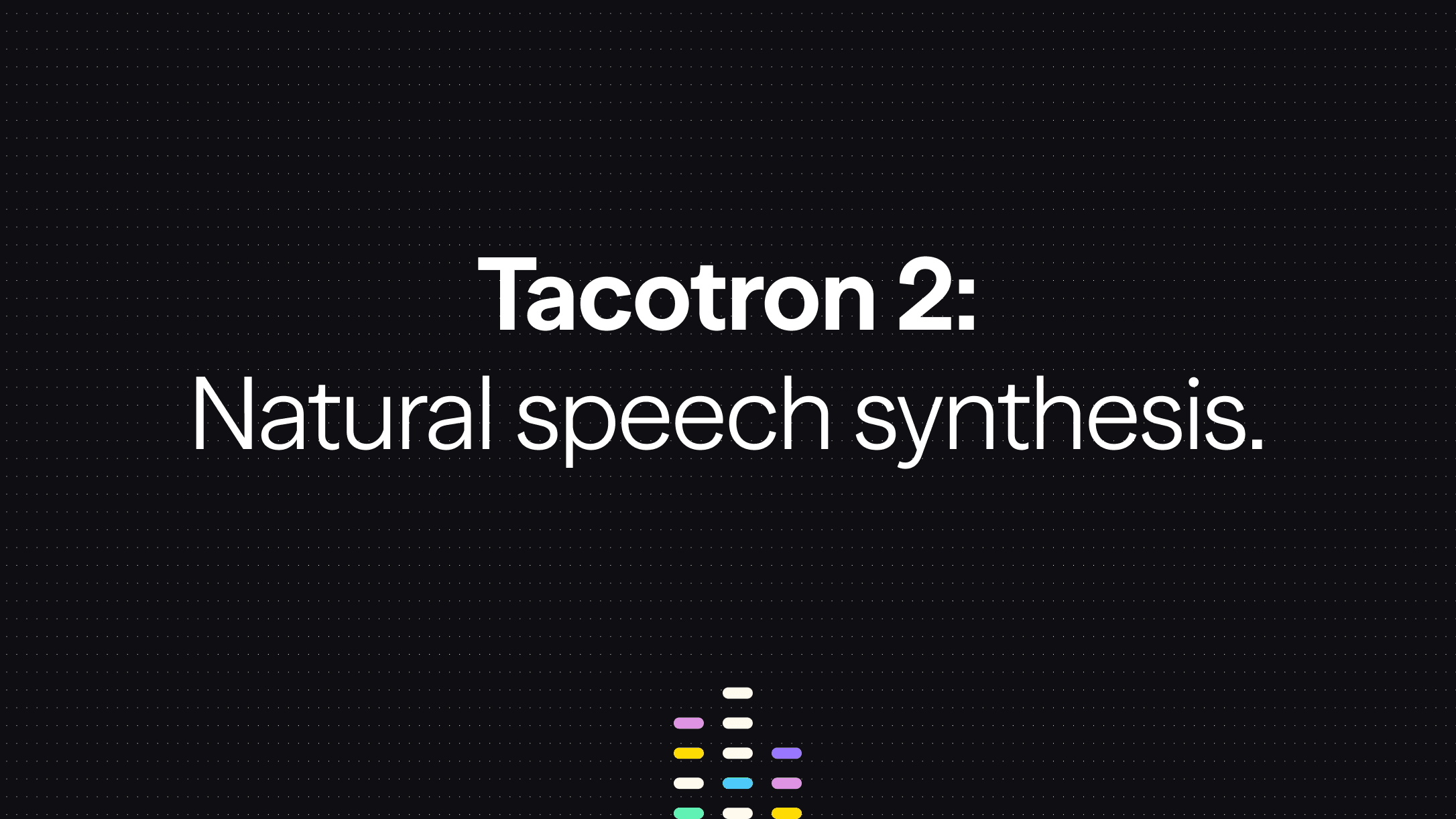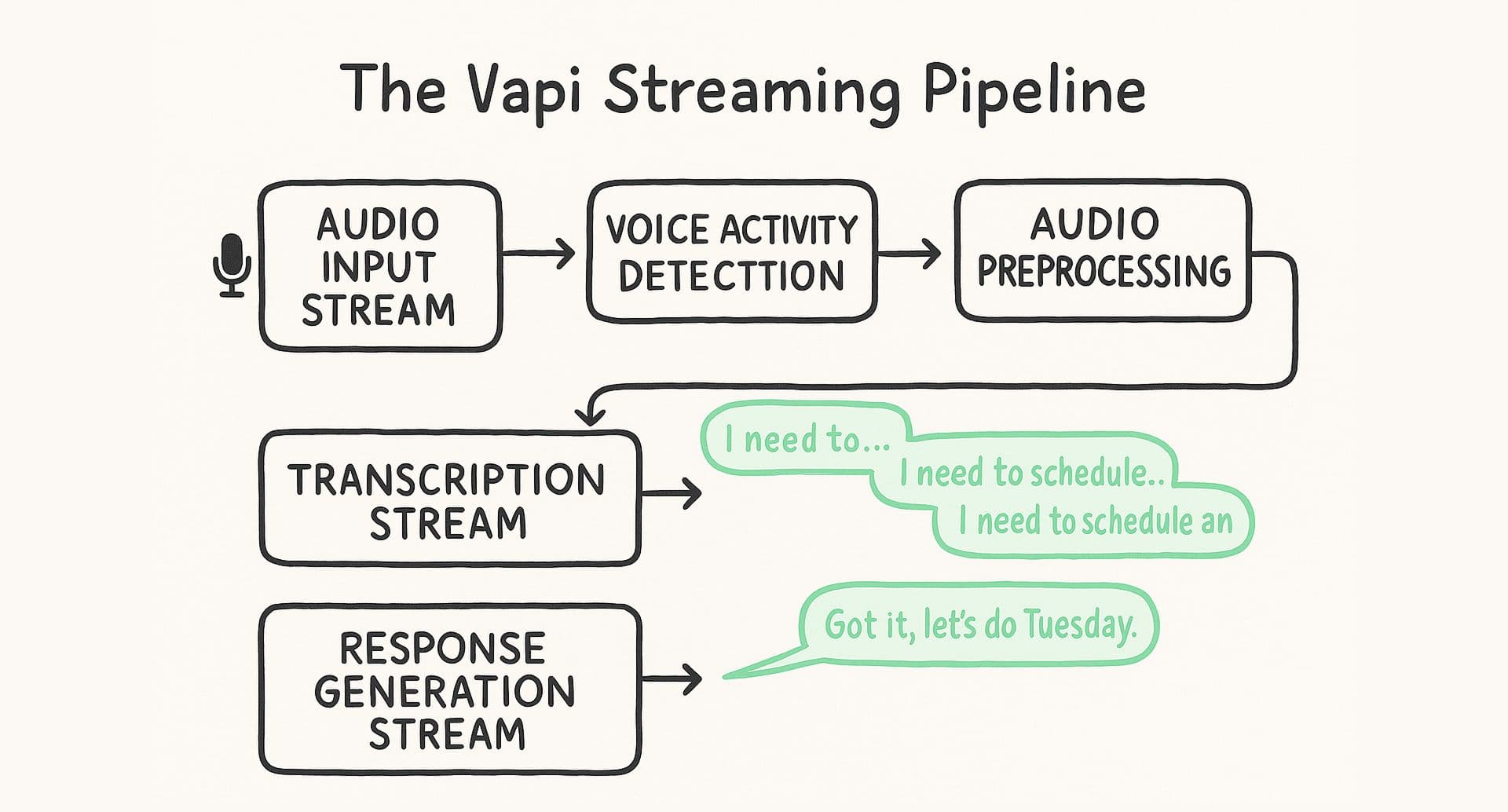Tacotron 2 for Developers

In-Brief
- What it is: Tacotron 2 is Google's advanced neural network that converts raw text directly into natural-sounding speech, using a streamlined encoder-decoder architecture with WaveNet vocoder integration.
- Why developers care: Community implementations provide full customization capabilities for specific domains, accents, and emotional tones, with pre-trained models available to overcome computational barriers.
- Real-world impact: Already powering voice interfaces across industries from customer service to accessibility tools, proving it's production-ready technology with measurable improvements to user experience.
This guide covers everything developers need to implement, optimize, and deploy Tacotron 2 in their applications.
How Tacotron 2 Transformed Speech Synthesis
Speech synthesis powers everything from virtual assistants to accessibility tools, and Tacotron 2 stands at the forefront of this revolution. While older systems relied on complex, multi-stage pipelines that stitched together pre-recorded speech segments, Tacotron 2 generates speech directly from raw text input. This streamlined approach produces impressively lifelike results that sound genuinely human.
Google researchers introduced this breakthrough in their Natural TTS Synthesis paper, building on their original Tacotron work. Tacotron 2 achieved a remarkable 4.53 mean opinion score (MOS), nearly matching the 4.58 score of professionally recorded speech.
What makes Tacotron 2 special is the thriving ecosystem of community implementations. While Google published the research without releasing their source code, developers have created robust open-source versions that can be customized for different languages, accents, and even emotional tones.
For companies investing in voice AI technologies like Vapi, Tacotron 2 opens new possibilities to create engaging, natural-sounding voice interfaces that feel truly conversational.
» Learn more about text-to-speech technology.
Understanding Tacotron 2's Architecture
Tacotron 2 uses a sequence-to-sequence framework with attention mechanisms, built around two main components: an encoder and a decoder.
The encoder processes text input through character embeddings, then passes them through three convolutional layers (each with 512 filters) followed by a single bidirectional LSTM layer with 512 units. This captures both local character patterns and long-range dependencies in the text. The decoder uses a two-layer LSTM network with 1,024 units each, generating mel spectrograms frame by frame using location-sensitive attention.
The attention mechanism focuses on different parts of the encoded input as it creates each spectrogram frame, like a person reading text who focuses on different words while speaking. A separate neural network predicts when to stop generation, preventing speech that repeats or cuts off abruptly.
This end-to-end training creates more coherent, natural speech than traditional rule-based systems, while the attention mechanism captures intonation and stress nuances that previous methods missed. Unlike its predecessor, Tacotron 2 doesn't use a reduction factor, meaning each decoder step corresponds to a single spectrogram frame for more precise control.
The WaveNet Partnership
Tacotron 2 generates mel spectrograms rather than audio directly. These spectrograms feed into a modified WaveNet vocoder that converts them into high-quality audio waveforms. This two-stage approach allows each component to specialize: Tacotron 2 handles linguistic processing while WaveNet focuses on audio synthesis. WaveGlow offers a faster flow-based alternative for real-time applications where speed matters more than absolute quality.
Getting Started With Tacotron 2 Implementation
Want to build your own Tacotron 2 system? While Google published the research without releasing their original code, the community has created excellent implementations you can use. Here's how to get started with the most popular versions.
Setting Up Your Development Environment
First, prepare your development environment:
- Install Python 3.6 or later.
- Install PyTorch 1.0 or later.
- Install NVIDIA CUDA Toolkit for GPU acceleration.
- Clone the NVIDIA Tacotron2 implementation and install dependencies.
bash
git clone https://github.com/NVIDIA/tacotron2.git
cd tacotron2
pip install -r requirements.txt
Training Your Model
Now you're ready to train:
- Prepare your dataset with high-quality audio recordings and matching text transcriptions.
- Configure the model by adjusting hyperparameters in the
hparams.pyfile. - Start training and monitor progress using TensorBoard.
- Generate speech from your trained model using the inference script.
bash
python train.py --output_directory=outdir --log_directory=logdir
tensorboard --logdir=logdir
python inference.py --checkpoint_path=outdir/checkpoint_X --text="Your text here"
Optimization Tips for Better Performance
Want better results? Try these proven strategies:
- Speed up training with multiple GPUs using distributed training flags.
- Experiment with learning rate, batch size, and network architecture settings.
- Save time with pre-trained models from NVIDIA GPU Cloud or PyTorch Hub implementations.
- Make your model more robust by applying pitch shifting, time stretching, and adding background noise to your training data.
- Target a specific domain or accent by fine-tuning a pre-trained Tacotron model on a smaller, specialized dataset.
Potential Applications Across Industries
Tacotron 2's capabilities open up transformative possibilities across multiple sectors. Here are the most promising applications developers are exploring:
Current Use Cases
Virtual assistants now sound like actual humans instead of robots reading a script. Customer service systems generate natural-sounding responses for automated interactions, enabling human-like voice interactions that don't make customers want to immediately hang up.
Accessibility tools have improved dramatically. Screen readers no longer sound like they're from the 1990s, making digital content more accessible to visually impaired users. Educational applications benefit too—language learning apps can now pronounce "croissant" correctly, and content creators can turn blog posts into podcasts without clearing their throats for hours.
Gaming and media industries use Tacotron to create diverse character voices without making voice actors record for days on end. The technology handles everything from cheerful NPCs to dramatic narration with equal finesse.
Customization Possibilities
Community implementations offer powerful flexibility for potential applications. Developers could train models to understand industry jargon and technical terms, handle multiple languages, or even mix them naturally within conversations. Emotional intelligence represents another frontier: models might sound appropriately excited about good news or sympathetic during difficult conversations.
Voice cloning capabilities could enable entirely new voices with distinct personality traits, or generate speech with regional accents that avoid stereotypes. For companies exploring customizable voice agents, this flexibility could mean creating voice experiences that fit specific brands and connect authentically with target audiences.
Overcoming Common Challenges
Despite its capabilities, Tacotron 2 isn't without obstacles. Here are the main challenges you'll face and practical solutions for each:
Technical Hurdles
High computational demand tops the list. Training Tacotron 2 is resource-intensive, requiring significant GPU power and time. Data requirements present another challenge: you need substantial amounts of high-quality audio and text pairs, which can be difficult to source for niche domains or rare languages.
Pronunciation of unseen words remains tricky. The model stumbles over unusual names, technical terms, or words it hasn't encountered during training. Try getting it to say "Worcestershire" correctly on the first try. Real-time performance can also be challenging, especially on devices without powerful GPUs, though strategies for reducing latency can help.
Practical Solutions
Start with cloud GPUs or distributed training instead of trying to run everything on your laptop. Leverage pre-trained models and fine-tune them for your specific needs rather than training from scratch. This approach saves both time and computational resources.
Expand your dataset through data augmentation techniques like pitch shifting or adding background noise. It's like strength training for your model. Implement custom pronunciation dictionaries to handle special terms:
python
def preprocess_text(text, pronunciation_dict):
words = text.split()
for i, word in enumerate(words):
if word in pronunciation_dict:
words[i] = pronunciation_dict[word]
return ' '.join(words)
# Usage
pronunciation_dict = {
'AI': 'A I',
'Vapi': 'V A P I',
# Add more custom pronunciations as needed
}
input_text = "Vapi is an AI company"
processed_text = preprocess_text(input_text, pronunciation_dict)
Optimize your model for deployment through pruning and quantization to improve performance on less powerful devices. Most importantly, engage with the open-source community. Someone has probably already solved your problem and shared their solution.
The Future of Speech Synthesis
Speech synthesis continues evolving rapidly. Real-time synthesis without awkward pauses is becoming standard. Emotional intelligence in voice agents means they can sound appropriately excited about your promotion or sympathetic about your bad day.
Multilingual models that speak multiple languages without separate training for each one are emerging. Advanced voice cloning capabilities are becoming so sophisticated that distinguishing between original and synthetic voices grows increasingly difficult.
Tacotron 2 continues evolving with newer variants offering faster non-autoregressive generation for improved inference speed. As voice AI advances, we're moving toward more natural, personalized voice interfaces that might make typing seem as outdated as rotary phones.
» Try a demo voice agent right now.
The thriving ecosystem of community implementations continues pushing the field forward, enabling innovation without massive research budgets while supporting customization for specific applications and languages.
Conclusion
Tacotron 2 has transformed how machines communicate with us, delivering near-human quality speech synthesis that makes yesterday's robotic voices seem like ancient history. Its neural architecture bridges technical sophistication with practical applications, offering valuable developer resources for building the next generation of voice interfaces.
While challenges exist, from computational demands to data collection, the community continues to find clever solutions that make this technology more accessible every day. As Tacotron 2 continues evolving, we're heading toward voice agents that sound increasingly human, with all the emotional nuance and natural flow of real conversation.
» Ready to build voice agents that sound genuinely human? Start with Vapi today.























